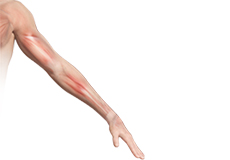Hand Anatomy
The hand is composed of nerves, bones, blood vessels, muscles, tendons and skin. Each part has its specific function such as nerves transfer sensation, joints control movements, blood vessels maintain circulation, muscles provide motion, tendons anchor the muscles to the bones, and skin receives sensations.

Hand Injuries
Injury or inflammation of any of these structures, due to a disorder or disease condition, may produce hand pain. Even compression of the nerves supplying these structures may cause hand pain.
Characteristics of Hand Pain
Hand pain is characterized by distress in the joints and tissues of the hand or fingers. Hand pain can be depicted as pulsating, aching, increased warmth, prickling, irritation and inflexibility.
Causes
The conditions and disorders that frequently play a role in hand pain include:
- Accidental injury and trauma
- Serious infections in the blood (septicemia)
- Fracture
- Nerve compression
- Tenosynovitis and carpal tunnel syndrome
- Strains in muscles and ligaments
- Osteoarthritis and rheumatoid arthritis
- Diabetes and peripheral neuropathy
- Tedious lifting, twisting or gripping
- Long-term use of keyboards
Treatment for Hand Pain
Hand pain can be treated normally by resting the hand, medications, bracing, heat or ice application, compression, stretching and strengthening exercises, and by treating the underlying cause or condition. In cases of chronic hand pain unresponsive to conservative treatment measures, hand surgery may be recommended.






